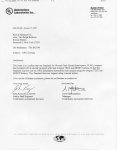Hey whenever we have ungrounded outlets I was replacing the GFI and tell him if they want to surge protector on there that's the best we can do without running a new Circuit back to the panel
Now I find out that surge protector there only ensured if they have a ground wire with them.
I also know bootleg grounds are not allowed anymore so what's an electrician to do?
And I'm having a hard time understanding how to use my sure test circuit analyzer to determine If I have a bootleg ground
I never read the book I just got it used on eBay :/
Now I find out that surge protector there only ensured if they have a ground wire with them.
I also know bootleg grounds are not allowed anymore so what's an electrician to do?
And I'm having a hard time understanding how to use my sure test circuit analyzer to determine If I have a bootleg ground
I never read the book I just got it used on eBay :/


